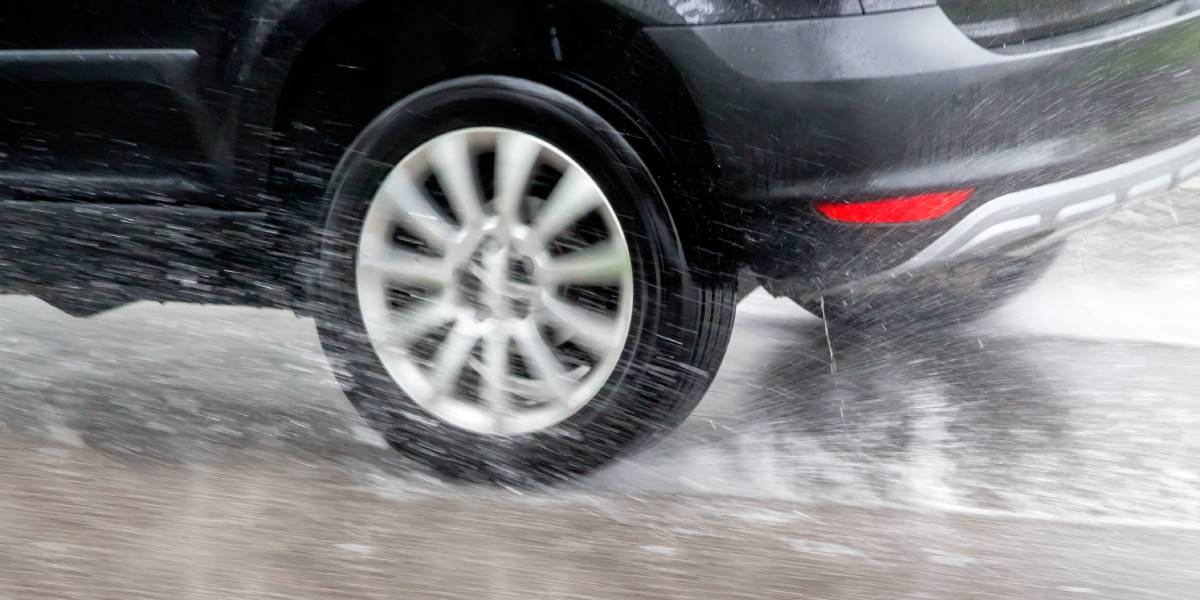Aquaplaning vs hydroplaning
Both refer to the exact same thing, though aquaplaning is the more commonly used term. The reason for the confusion is down to vehicle type and etymology.
In sailing hydroplaning refers to the boat skipping on the surface of the water. In etymology, ‘aqua’ comes from Latin origin, whereas ‘hydro’ comes from Greek.
What causes aquaplaning?
Aquaplaning is most likely to happen during, or just after, periods of heavy rainfall when there is a build-up of surface water on the road. It can also happen when driving on uneven patches of road where large puddles of standing water can collect.
Why is tyre tread depth important?
The primary job of the tread pattern in your vehicle’s tyres is to expel water, maintaining contact with the road surface to provide grip and traction. If tread depth is inadequate, the tyre can expel less water, even at slower speeds, meaning the risk of aquaplaning is higher.
Tyres become much more likely to aquaplane with a tread depth less than 3mm, meaning it is advisable to monitor the tread regularly and closely. When it gets below this point, although still legal, the tread is much more likely to affect handling and safety in wet conditions.
Why is tyre pressure important?
Incorrect tyre pressures can result in under and over inflation of a tyre. The reason this is important is because, in both instances, less of the tyre’s tread is in contact with the road. The less tread, the less grip you have and the higher the chance of hydroplaning.
Checking your tyres pressure regularly is important, especially during the colder months. You can find what pressure your vehicles tyres need to be either in the manufacturers handbook or by using out helpful online pressure calculators.
How do I avoid aquaplaning?
The best way to deal with aquaplaning, and to avoid it happening altogether, is by ensuring your tyres have adequate tread depth and the correct air pressure. You can do this by performing monthly tyre checks, plus extra checks before long journeys.
Regardless of whether you have brand new tyres or a more worn-down tread, all drivers should slow down in wet conditions to reduce the risk of aquaplaning. As a general rule of thumb, you should reduce your speed by a third, so if the speed limit is 70, reduce it to 47.
What should I do if my car aquaplanes?
In the event that your vehicle aquaplanes, it is advised that drivers take their foot off the accelerator gradually and depress the clutch. Hold your hands firmly on the wheel and avoid braking suddenly. Any sudden movements may be exacerbated when hydroplaning.
If there is a danger of you colliding with someone or something, however, drivers should attempt to emergency brake ONCE and once only. In the majority of scenarios, the rear tyres should have just enough grip to slow the vehicle down and keep you safe.

